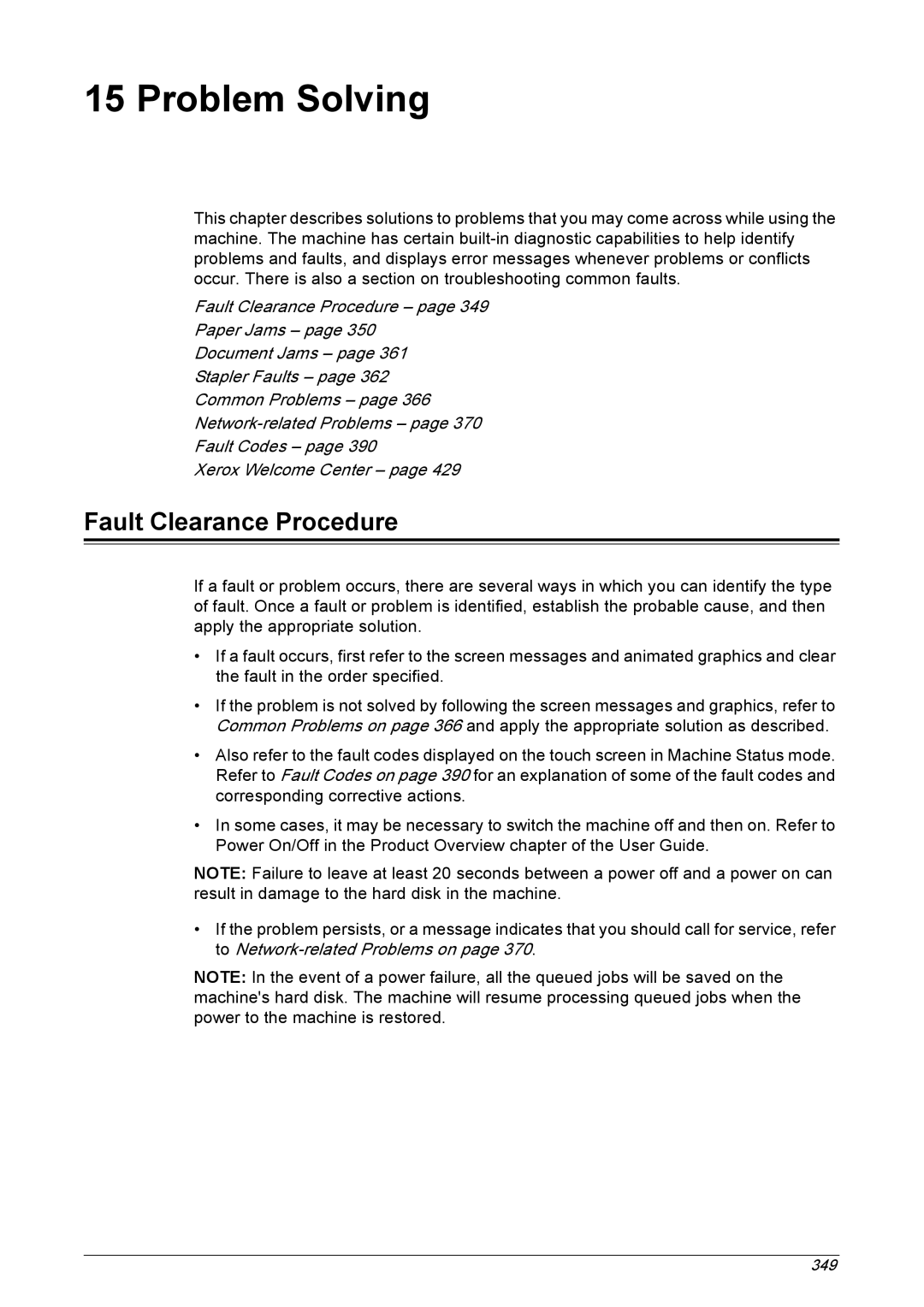
15 Problem Solving
This chapter describes solutions to problems that you may come across while using the machine. The machine has certain
Fault Clearance Procedure – page 349
Paper Jams – page 350
Document Jams – page 361
Stapler Faults – page 362
Common Problems – page 366
Fault Codes – page 390
Xerox Welcome Center – page 429
Fault Clearance Procedure
If a fault or problem occurs, there are several ways in which you can identify the type of fault. Once a fault or problem is identified, establish the probable cause, and then apply the appropriate solution.
•If a fault occurs, first refer to the screen messages and animated graphics and clear the fault in the order specified.
•If the problem is not solved by following the screen messages and graphics, refer to Common Problems on page 366 and apply the appropriate solution as described.
•Also refer to the fault codes displayed on the touch screen in Machine Status mode. Refer to Fault Codes on page 390 for an explanation of some of the fault codes and corresponding corrective actions.
•In some cases, it may be necessary to switch the machine off and then on. Refer to Power On/Off in the Product Overview chapter of the User Guide.
NOTE: Failure to leave at least 20 seconds between a power off and a power on can result in damage to the hard disk in the machine.
•If the problem persists, or a message indicates that you should call for service, refer to
NOTE: In the event of a power failure, all the queued jobs will be saved on the machine's hard disk. The machine will resume processing queued jobs when the power to the machine is restored.
349
